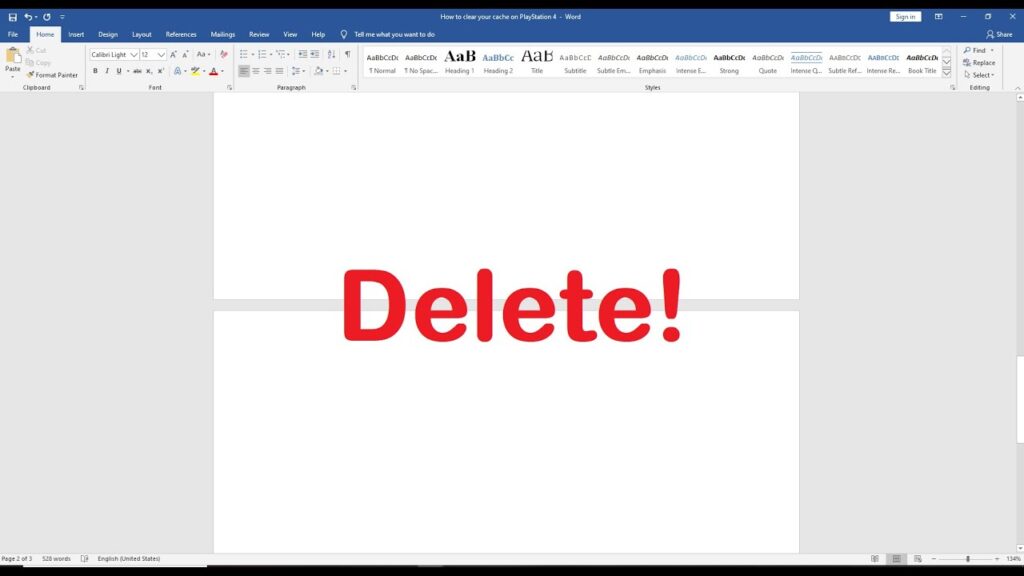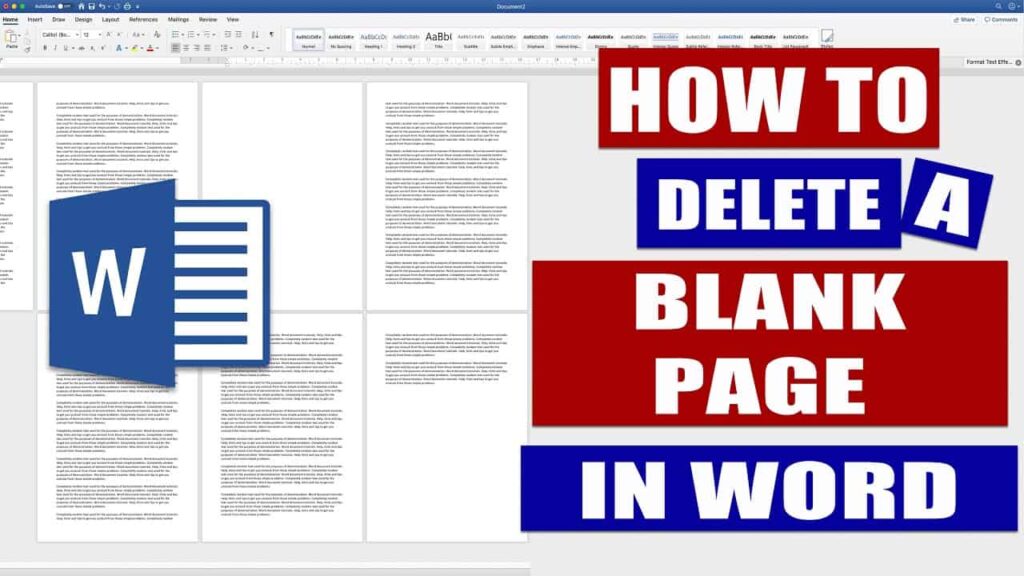Knowing how to delete a page in Word is a valuable skill, especially when you need to clean up your document or remove unnecessary content. Whether you’re working with a text-heavy report or a simple letter, having control over your document’s structure can improve its readability and presentation. This guide will walk you through the different methods to delete a page in Microsoft Word, covering various scenarios and providing practical tips to ensure you handle page removal effectively.
Understanding the Basics: Why Delete a Page?
Reasons for Deleting a Page
There are several common reasons why you might need to delete a page in Word:
- Unwanted Blank Pages: Sometimes, extra blank pages appear at the end of a document or in between content due to formatting issues.
- Content Removal: You might need to delete a page to remove outdated or irrelevant content.
- Document Reorganization: When reorganizing content, you may find that certain pages need to be removed to achieve a better flow.
How to Delete a Page in Word: Step-by-Step Methods
1. Deleting a Blank Page
One of the most frequent issues is dealing with unwanted blank pages in Word. Here’s how to remove a blank page:
- Navigate to the Blank Page: Scroll to the page you want to delete. If it’s at the end of your document, you might need to ensure it is truly blank.
- Select the Blank Page: Click at the very top of the blank page. Sometimes, extra paragraphs or page breaks may cause the page to appear blank.
- Delete the Blank Page: Press the “Backspace” key on your keyboard. If that doesn’t work, place the cursor at the end of the page before the blank page and press “Delete.” This method usually works to remove blank pages caused by unnecessary breaks.
2. Deleting a Page with Content
If the page you want to remove contains text or images, follow these steps:
- Highlight the Content: Click and drag to select all the content on the page you want to delete.
- Delete the Content: Press the “Delete” key on your keyboard. This will remove the content but not necessarily the page itself if the page is not entirely empty.
- Check for Page Breaks: Sometimes, a page may contain a page break. To delete it, go to the “Home” tab, click on the “Show/Hide ¶” button to reveal formatting marks, then locate and delete the page break.
3. Using the Navigation Pane
The Navigation Pane can help you locate and delete pages more effectively:
- Open the Navigation Pane: Go to the “View” tab and check the “Navigation Pane” box.
- Find the Page: In the Navigation Pane, click on “Pages” to see thumbnails of your document’s pages. Locate the page you want to delete.
- Delete the Page: Click on the thumbnail of the page you wish to remove. Select the content on that page and press “Delete.”
4. Removing a Page Break
A page break can sometimes cause unwanted extra pages:
- Show Formatting Marks: Go to the “Home” tab and click on the “Show/Hide ¶” button to reveal formatting marks.
- Locate the Page Break: Find the page break (it will appear as a dashed line labeled “Page Break”).
- Delete the Page Break: Click on the page break line and press “Delete” to remove it, which will pull up content from the following page.
Common Issues and Solutions
Page Numbers and Headers
If your document has headers or footers with page numbers, removing a page might affect these elements:
- Update Page Numbers: After deleting a page, ensure that page numbers are updated. Go to the “Insert” tab, click on “Page Number,” and select “Update Page Numbers.”
- Check Headers and Footers: Ensure that headers and footers reflect the correct page count and are adjusted accordingly.
Formatting Problems
Occasionally, formatting issues can complicate page deletion:
- Excessive Spacing: If a page seems stuck due to excessive spacing, adjust the margins and paragraph spacing to see if it helps remove the page.
- Invisible Content: Sometimes invisible content or formatting marks can cause a page to appear. Use the “Show/Hide ¶” feature to check for any hidden content.
Tips for Efficient Page Management
Regularly Review Your Document
To avoid the need for frequent page deletions, regularly review and clean up your document as you go. This practice can prevent the accumulation of unnecessary pages.
Use Section Breaks Wisely
If your document requires different formatting or layout changes, use section breaks instead of page breaks. Section breaks allow you to manage content more effectively without affecting the entire document.
Utilize Word’s Built-in Tools
Take advantage of Word’s built-in tools and features, such as the Navigation Pane and formatting marks, to streamline the process of managing and deleting pages.

Conclusion
Knowing how to delete a page in Word is essential for maintaining a polished and well-organized document. Whether you’re dealing with blank pages, unwanted content, or formatting issues, following the methods outlined in this guide will help you handle page deletions efficiently. By understanding these techniques and tips, you can ensure that your document remains clean and professional, making it easier to present your work effectively.



